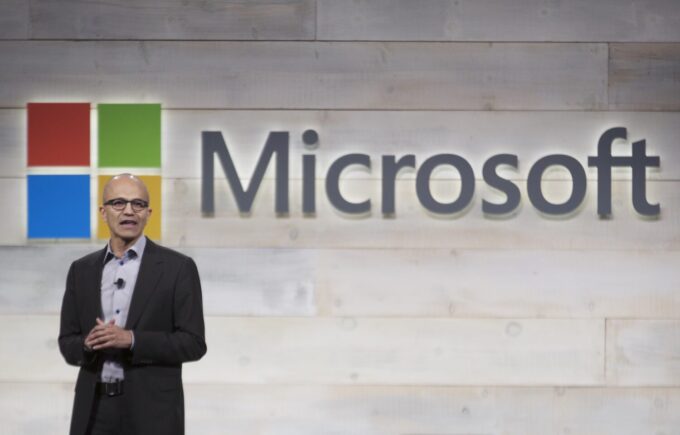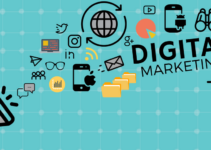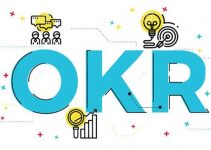In the rapidly evolving world of business, the pursuit of growth often involves more than just profits. Beyond the balance sheet and quarterly reports, a growing number of companies are realizing that philanthropy, an act of giving back, can significantly boost their growth trajectory. This realization forms the basis of what many have termed the “Generosity Dividend.”
In this article, we will delve deep into the connection between philanthropy and business growth, understanding how the two seemingly disparate entities influence each other in today’s corporate landscape.
The Link Between Giving and Growing
At the heart of it, the concept is simple: when businesses donate to causes or invest in social initiatives, like David Bolno, they not only help those causes but also end up creating a positive image for themselves, leading to tangible business advantages.
- Enhanced Reputation: Companies that engage in charitable efforts often enjoy a boost in their public image. This enhanced reputation can lead to increased brand loyalty among customers who appreciate the company’s values and efforts.
- Employee Satisfaction: Philanthropic endeavors can lead to happier employees. Workers often feel proud to be part of a company that contributes to the betterment of society, leading to increased morale and reduced turnover.
- Strategic Partnerships: Philanthropy can open doors to partnerships with other companies, NGOs, or governmental entities, which can provide new avenues for business growth and diversification.
Real-World Success Stories

Source: fortune.com
To further illustrate the point, let’s consider a few examples:
- Patagonia: The outdoor apparel company pledges 1% of its annual sales to environmental causes. This commitment has not only helped conservation efforts but also resonated deeply with its consumer base, helping drive sales and loyalty.
- Microsoft: Founded by Bill Gates, the company’s philanthropic arm, Microsoft Philanthropies, has donated billions in cash and technology to various causes. These efforts have bolstered the company’s reputation globally and have helped it establish strong connections in numerous countries.
Networking Through Philanthropy

Source: jewishjournal.com
Philanthropy often provides businesses with networking opportunities that might not have been available otherwise.
- Events and Galas: Charity events can be platforms for business leaders to connect, share ideas, and potentially form partnerships.
- Board Positions: Executives who serve on the boards of charitable organizations can forge relationships with influential figures from various sectors, potentially leading to business collaborations.
Inculcating Innovation
Involvement in philanthropy can also act as a catalyst for innovation within companies.
- New Perspectives: Tackling social challenges can offer companies new perspectives on problems, leading to innovative solutions that can be applied in the business context.
- Diverse Talent: Collaborating with NGOs or charitable institutions can expose businesses to a pool of diverse talent, driving innovation from different angles.
Strengthening Stakeholder Relations
Philanthropy often serves as a bridge between businesses and their stakeholders.
- Local Communities: For businesses that depend on local communities (like mining or manufacturing companies), investing in local charitable initiatives can strengthen ties and reduce conflicts.
- Government Relations: Philanthropic initiatives can help in building and maintaining a healthy relationship with governmental bodies, paving the way for smoother business operations.
The ROI of Generosity

Source: jacobsmedia.com
While it might seem challenging to measure the return on investment (ROI) for philanthropic endeavors, several indirect metrics indicate growth:
- Increased Brand Loyalty: A study by Cone Communications found that 87% of consumers would purchase a product because a company advocated for an issue they cared about.
- Employee Retention: Philanthropic companies often report lower turnover rates, saving costs related to hiring and training.
- Tax Benefits: Many jurisdictions offer tax deductions or credits for charitable donations, leading to direct financial savings for businesses.
Crafting a Philanthropic Strategy
For philanthropy to effectively fuel business growth, it’s essential to have a clear strategy.
- Align with Core Values: Ensure that the causes you support align with your company’s values and mission. This alignment ensures authenticity, which stakeholders can recognize and appreciate.
- Engage Employees: Involve employees in the decision-making process of selecting causes or designing philanthropic programs. Their buy-in will further amplify the benefits.
- Transparent Reporting: Regularly share updates on philanthropic efforts with stakeholders. Transparency builds trust and shows accountability.
Overcoming Potential Pitfalls
Like any other business endeavor, philanthropy can have its challenges:
- Authenticity Concerns: Engage in philanthropy genuinely, not just as a PR stunt. Inauthentic efforts can backfire and harm the brand.
- Overcommitment: While it’s commendable to want to make a difference, overcommitting resources can strain the business. It’s essential to find a balance.
FAQs
What is the difference between Corporate Social Responsibility (CSR) and philanthropy?

Source: winmr.com
While both CSR and philanthropy involve giving back to the community, they differ in approach and intent. CSR usually refers to initiatives and practices that a company adopts as part of its business model to ensure responsible, sustainable operations, which can include environmental conservation or fair trade practices. On the other hand, philanthropy is purely about charitable giving, be it in the form of money, time, or resources, without necessarily linking it to the company’s core operations.
Can small businesses also experience the Generosity Dividend?
Absolutely! While large corporations often grab headlines with significant donations, small businesses can also benefit from the Generosity Dividend. By supporting local causes or engaging in community projects, small businesses can boost their local reputation, foster customer loyalty, and create strong community ties which can be invaluable for growth.
How can businesses measure the impact of their philanthropic efforts?
Measuring the impact can be done through a combination of quantitative and qualitative methods. Quantitatively, businesses can track metrics like increased sales, customer engagement, and employee retention post-philanthropic initiatives. Qualitatively, feedback from beneficiaries, community sentiment, and the overall brand image can be assessed through surveys or direct interactions.
Is there a recommended percentage of profits that businesses should donate to experience the Generosity Dividend?

Source: alliedwallet.com
There isn’t a one-size-fits-all answer to this. The “right” amount varies based on a company’s financial position, goals, and the causes they’re passionate about. However, many organizations adopt the “1% for the Planet” model, pledging 1% of annual sales to environmental causes, as a starting point.
What should a company do if its philanthropic efforts are not well-received or misinterpreted by the public?
Transparency and open communication are key. If a company’s philanthropic efforts are misunderstood, it’s essential to address concerns openly, possibly through press releases, community forums, or direct engagements. Sometimes, seeking third-party audits or verifications can also provide an unbiased view of the company’s efforts, further assuaging public concerns.
How can businesses ensure that their donations are used effectively by the beneficiary organizations?
Due diligence is crucial. Before making a donation, businesses should research potential beneficiary organizations, understand their track record, financial health, and the effectiveness of their programs. Regular follow-ups, updates, and impact reports can also help in ensuring that the donations are being used effectively.
Conclusion
The Generosity Dividend is a compelling testament to the idea that doing good is good for business. By understanding and leveraging the symbiotic relationship between philanthropy and business growth, companies can create a world where profitability and societal improvement go hand in hand.
As the corporate landscape continues to evolve, it is clear that the companies that recognize and act upon this connection will be the ones leading the charge towards a brighter, more prosperous future for all.







